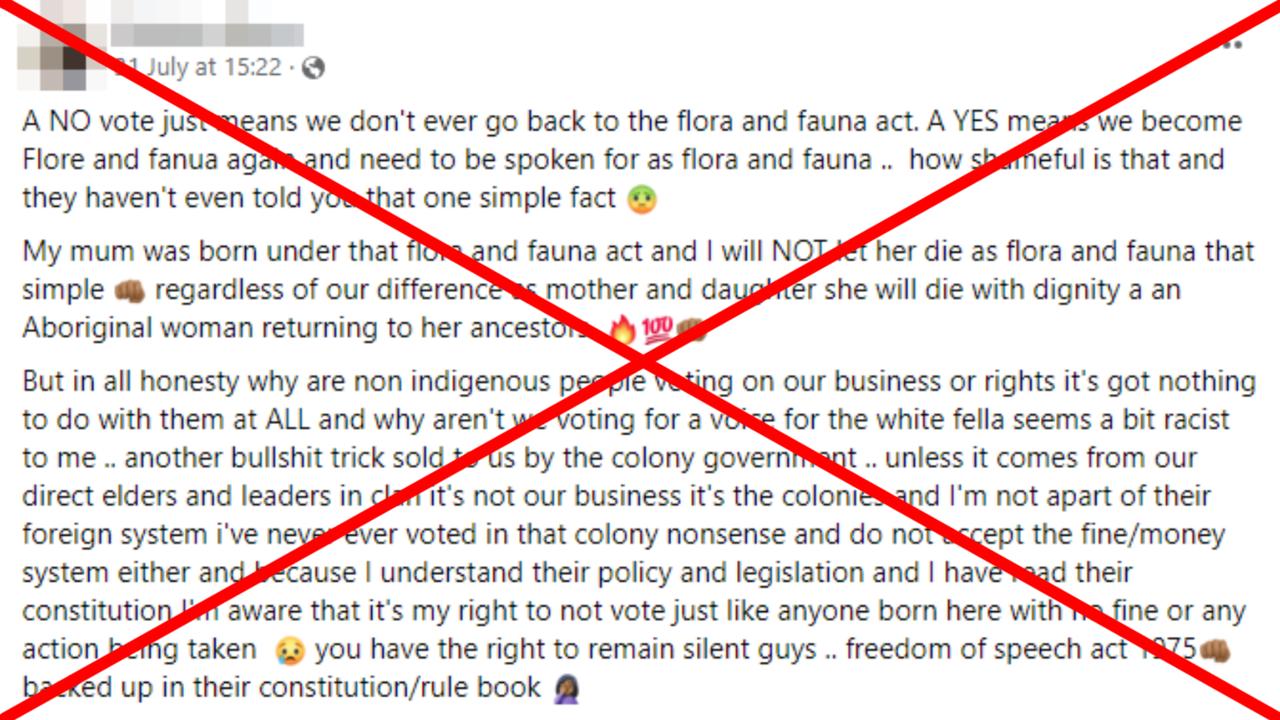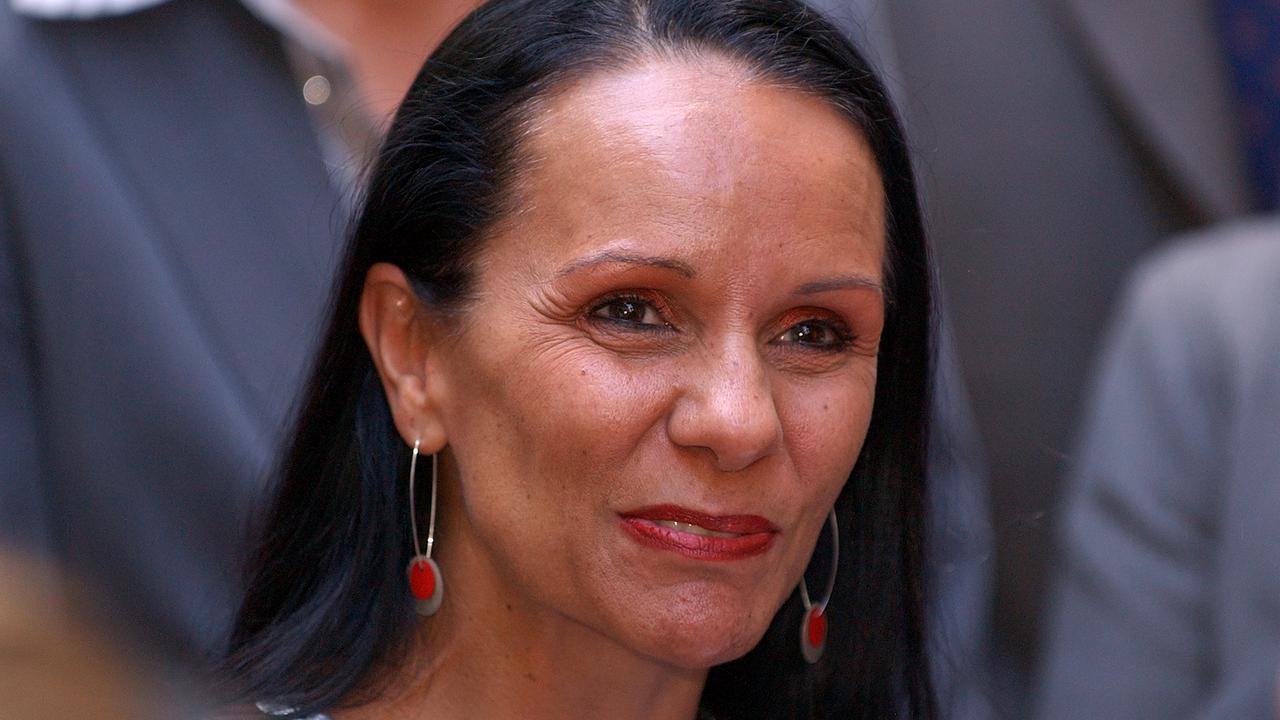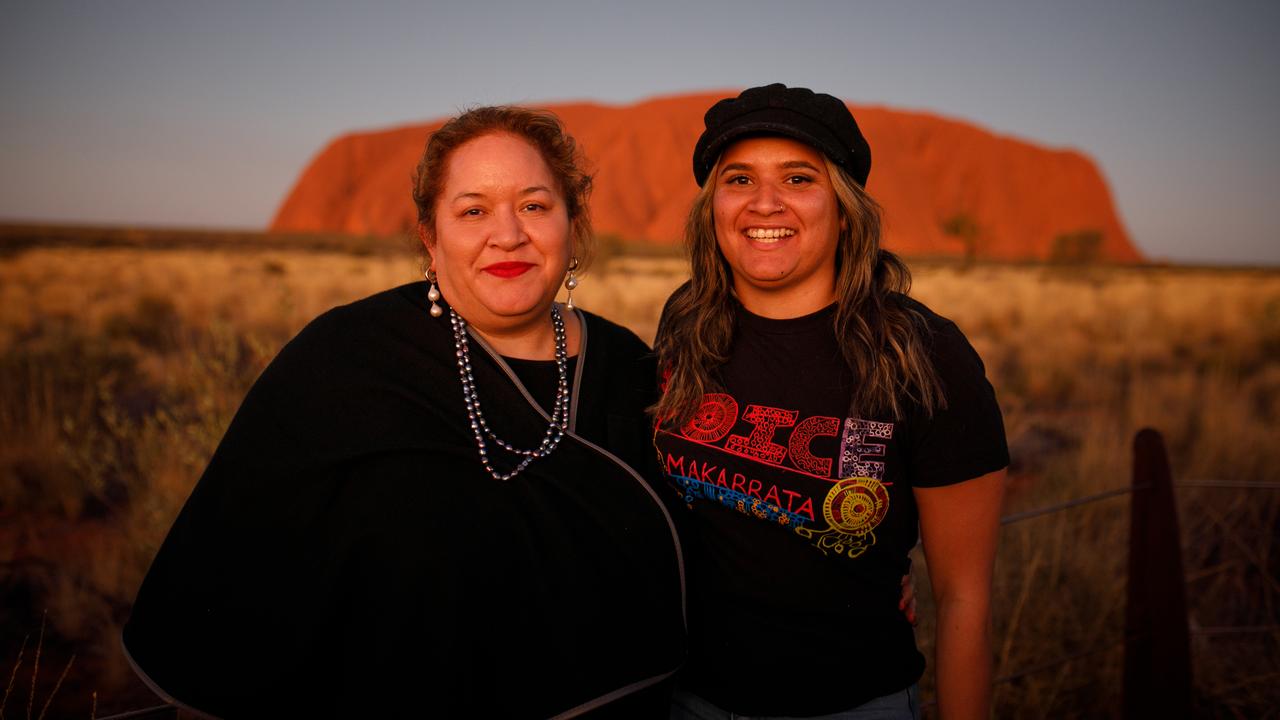WHAT WAS CLAIMED
Indigenous people were legally classified as fauna prior to the 1967 referendum.
OUR VERDICT
False. Indigenous people were never classified as fauna.
The longstanding myth that Indigenous people were classified as "fauna" under a Flora and Fauna Act until the 1967 referendum is gaining new life ahead of the vote on a proposed voice to parliament.
Social media users and public figures have claimed Aboriginal and Torres Strait Islander people were legally classified as animals before being granted Australian citizenship as part of the 1967 vote.
This is false. While Aboriginal people were subject to discriminatory laws and treatment, experts told AAP FactCheck they were never classified under any "Flora and Fauna Act" - which has never existed in any jurisdiction.
It is also false that Indigenous people were granted Australian citizenship in 1967. This happened in 1948.
The flora and fauna claim is being repeated in social media posts ahead of the referendum - see here, here, here, here, here, here, here, here, here and here.

AFL great Adam Goodes also made the claim at a Qantas 'yes' campaign event earlier this month (video mark 11min 01sec).
Some posts claim Indigenous people are still considered fauna.
The myth gained widespread usage after Minister for Indigenous Australians Linda Burney used her maiden speech to NSW Parliament in May 2003 to say she existed under the Flora and Fauna Act for the first 10 years of her life - a claim she has repeated.
Despite repeated attempts to dispel the myth (as seen here, here and here), it continues to spread ahead of the referendum on the Aboriginal and Torres Strait Islander Voice.
Samuel Byrnand, a University of Canberra academic who wrote an honours thesis on the subject, found no evidence of any law classifying Indigenous Australians as fauna at state or federal level.

"The Flora and Fauna Act does not exist now, nor has it ever existed," Mr Byrnand wrote in a piece for SBS in 2018.
"It is a very powerful and successful example of the urban myth which provides no benefits to any Australian. It only acts to compound the suffering of Aboriginal and Torres Strait Islander people."
Uluru Statement from the Heart co-convener and UNSW Sydney legal expert Professor Megan Davis told AAP FactCheck the claim is false.
Professor Davis said the expert panel on constitutional recognition of Indigenous Australians, of which she was a member, investigated the myth and found zero evidence to support it.
Professor Marcia Langton, one of Australia's leading Indigenous academics, told ABC Fact Check the claim was first mentioned by Aboriginal filmmaker Lester Bostock in the 1970s.
"I thought at the time, and so did many others, that he meant this in a metaphorical way," Prof Langton said.
"I had no idea that this would grow into the urban myth that it is today."

She added: "We were not classified under the 'flora and fauna act' but we were treated as animals."
Professor Russell McGregor, an Australian history expert at James Cook University, said there is much misunderstanding surrounding the 1967 referendum.
It did not, as is often claimed, result in Indigenous people being granted citizenship and voting rights. This had already happened in 1948 and between 1962 and 1965, respectively.
In practical terms, the 1967 referendum result gave the federal government the power to make special laws for Indigenous people, a power previously held by states alone.
It also allowed for Indigenous people to be fully counted as part of the general population in the census.
The Verdict
The claim Indigenous people were legally classified as fauna prior to the 1967 referendum is false.
The so-called Flora and Fauna Act never existed and is a long-running myth.
The 1967 referendum also did not make Indigenous people citizens - this had already happened in 1948.
False - The claim is inaccurate.
AAP FactCheck is an accredited member of the International Fact-Checking Network. To keep up with our latest fact checks, follow us on Facebook, Twitter and Instagram.












